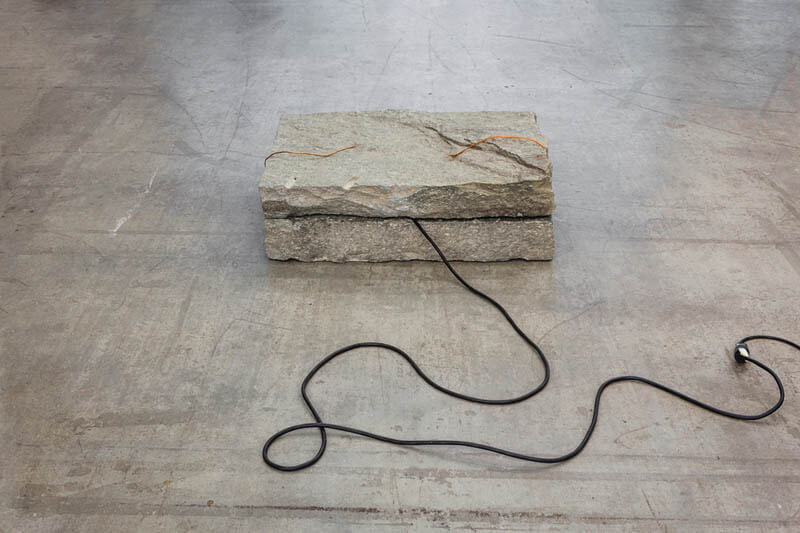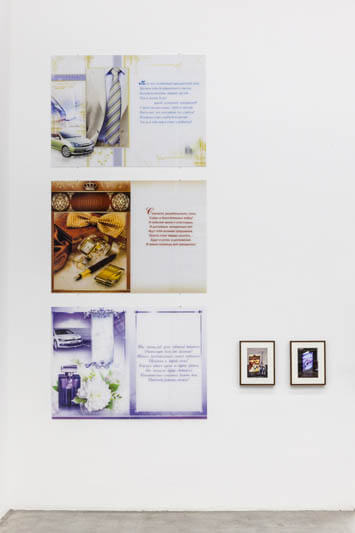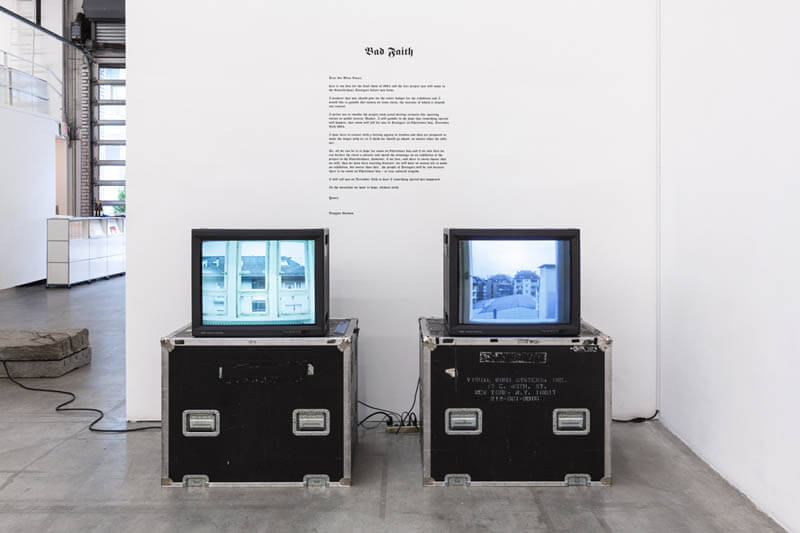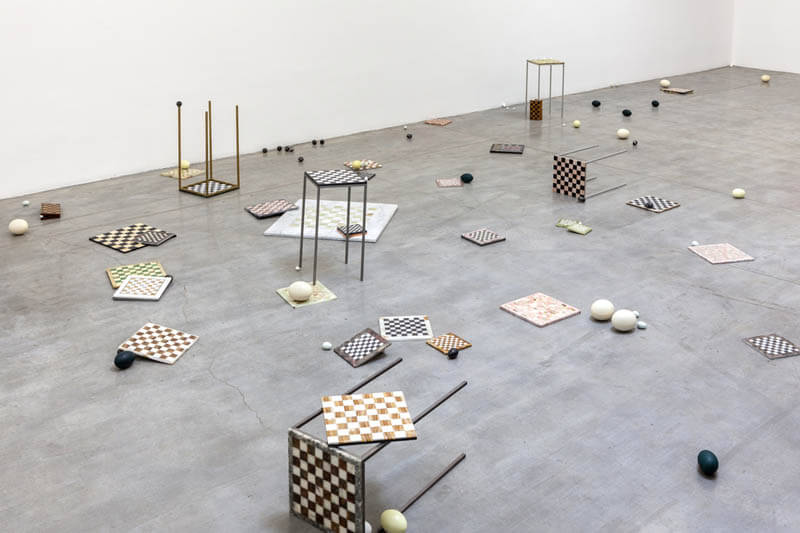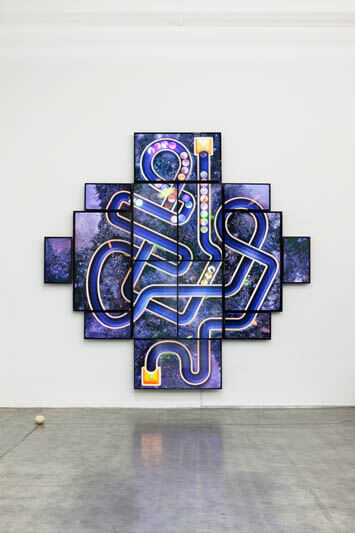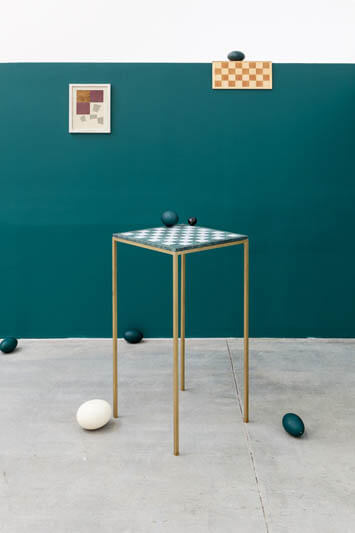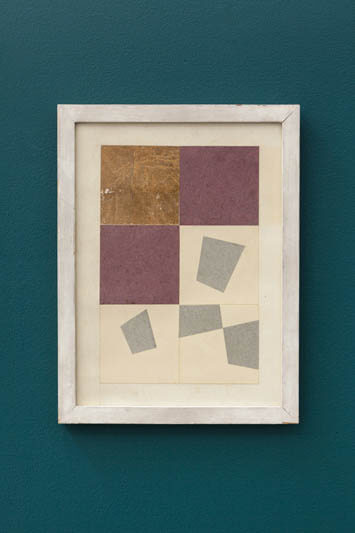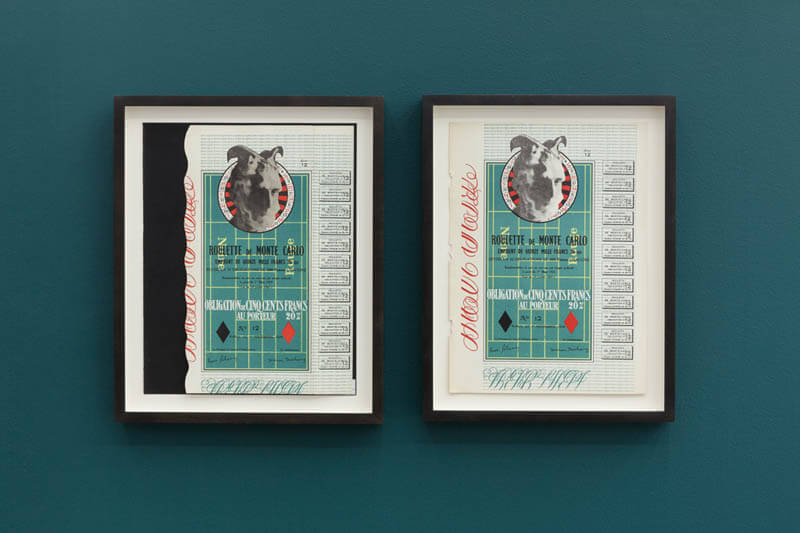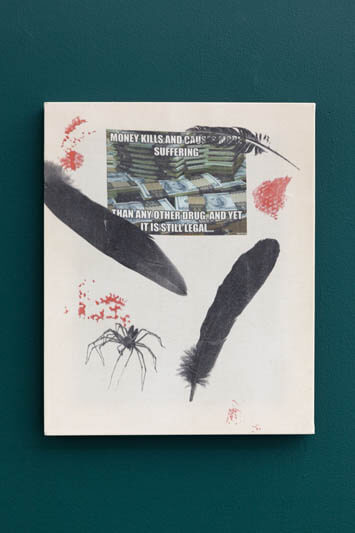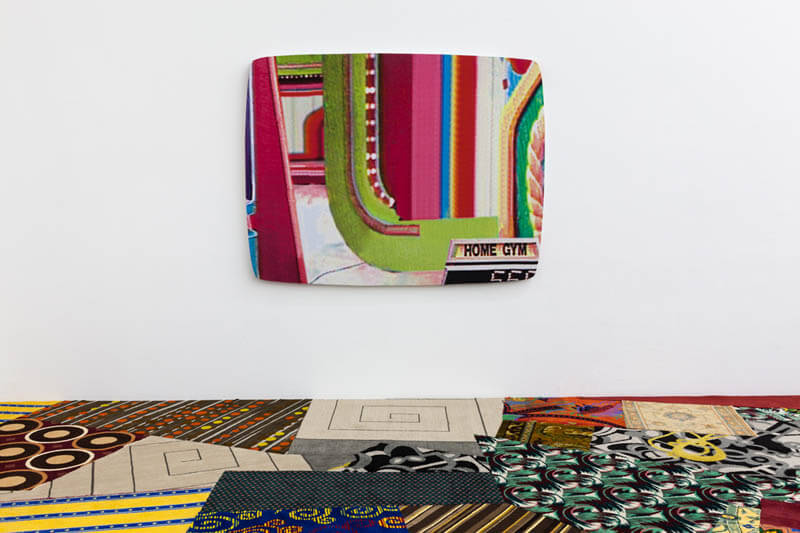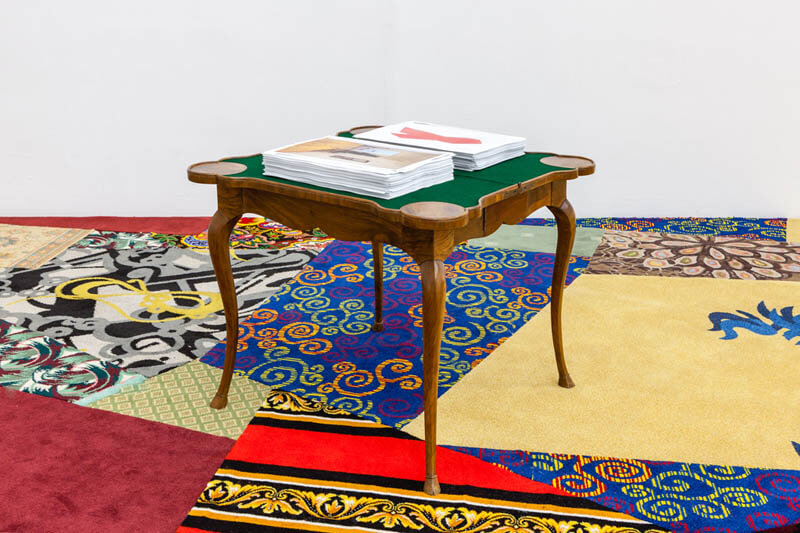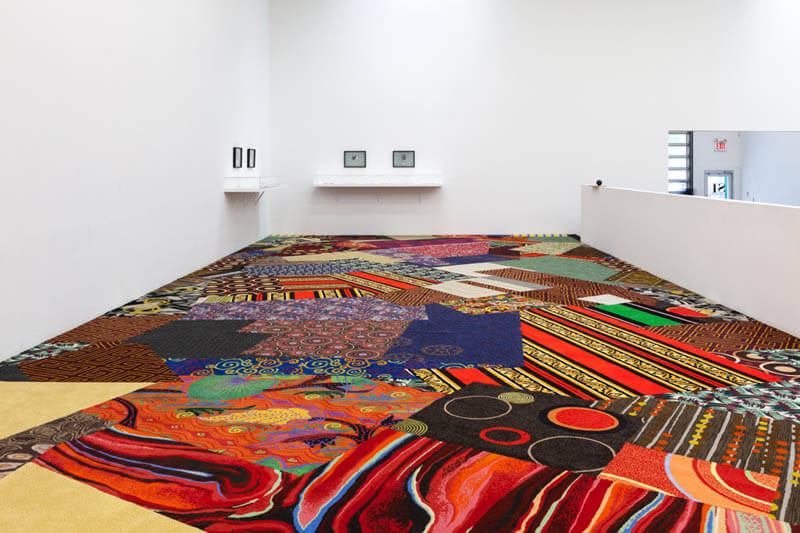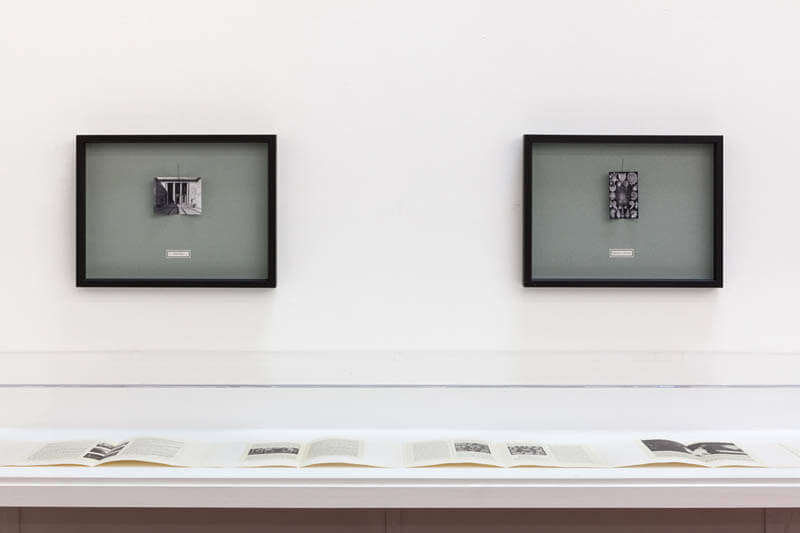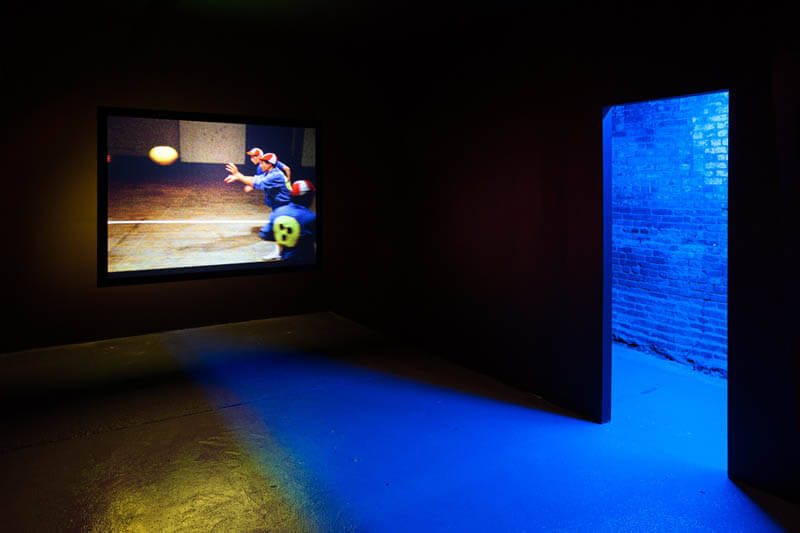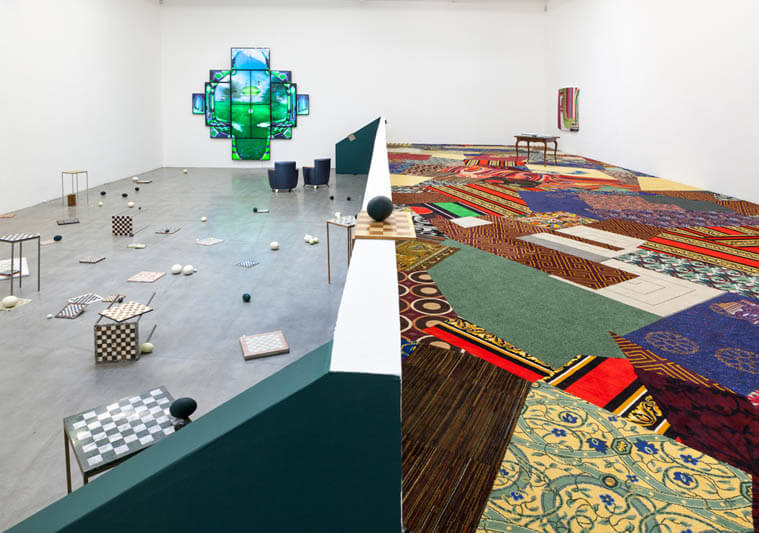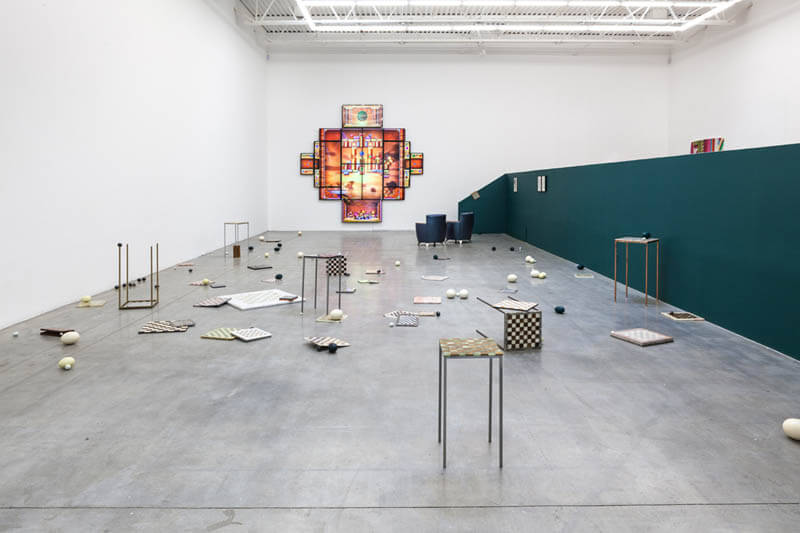The St. Petersburg Paradox
May 28 - Aug 17 2014
Giovanni Anselmo, Jean Arp, Ericka Beckman, Barbara Bloom, Alex Mackin Dolan, Marcel Duchamp, Cayetano Ferrer, Douglas Gordon, John Miller, Kaspar Müller, Sarah Ortmeyer, Tabor Robak, and Amalia Ulman.
In the St. Petersburg gamble, the house offers to flip a coin until it comes up heads. The payoff doubles each time tails appears, with this compounding stopping and payment being given at the first heads. By conventional definitions, the St. Petersburg gamble has an infinite expected value; nonetheless, most people share the intuition that they should not offer more than a few dollars to play. Explaining why people offer such small sums to play a gamble with infinite expected value remains a contentious question in economics and philosophy.
Based upon the theory of the same name developed by 18th century Swiss mathematicians, cousins Nicolaus and Daniel Bernoulli, The St. Petersburg Paradox invites artists to consider notions of risk aversion, expected value, and gaming.
An early experiment in the use of chance procedures as a means to suspend artistic agency, Jean Arp’s 1916 Collage géométrique is one in a series of collages drawn from the random composition of tossed pieces of paper. Eighty years later, Douglas Gordon’s Bad Faith gambles with the very creation of a new artwork by betting its entire production budget on the unlikely occurrence of snow on Christmas Day in Stuttgart. Furthering this conflation of artwork and monetary value is a group of Marcel Duchamp’s Monte Carlo Bonds (1924-1938), a playful attempt at bankrupting the Monaco casino through a flimsy financial scheme. With “Remnant Recomposition” (2014), artist Cayetano Ferrer has created a site-specific installation composed of dozens of different carpets specifically manufactured for casinos, where frenetic visual stimuli are designed to both obscure the wear and tear of 24-hour gambling palaces and to brighten up the cold mechanics of adverse probability.
Tabor Robak’s new video, A* (2014), which was commissioned for this exhibition, channels the intensity of the gamer’s ups and downs, ricocheting between the euphoria of an elusive win and resignation to inevitable loss. John Miller’s painting Labyrinth 1 (1999) renders a zoomed-in frame from the perennially popular TV game show The Price is Right at the height of mass media’s ubiquity. Ericka Beckman’s film You the Better (1983), drawing upon the adversarial nature of team sports, animates the absurdity of blithely entering into a game that cannot be won.
New works created by Alex Mackin Dolan, Kaspar Müller and Amalia Ulman engage with the internet’s refraction of aspirational consumption. Elements of Dolan’s painting are culled from disparate images and memes born out of financial anxieties, while Ulman’s large digital prints of found postcards revel in the romanticization of what American economist and sociologist Thorstein Veblen has described as “pecuniary canons of taste” (The Theory of the Leisure Class, 1899). Müller’s stack of prints, entitled Tropic of Cancer (2014), exploits the rote vocabularies and unpredictable social dynamics of online peer-to-peer commerce, as the artist offers the entire contents of his Berlin apartment for sale via a dedicated phone line (+4917690988107, 24/7). The Swiss Institute’s website will encourage bidding on a different item each day.
Barbara Bloom’s 1992 artist book Never Odd or Even (the title itself a palindrome), along with four works from her eponymous series of butterfly cases, illustrates the possibility of the zero-sum game conjectured by the Bernoullis’ famous paradox. Sarah Ortmeyer’s new sculpture series, SANKT PETERSBURG PARADOX (2014) scatters a miscellany of chessboards across the main gallery, with game pieces replaced by 109 eggs of various sizes and types in a precarious equilibrium. This sense of tension and an undercurrent of mortal jeopardy charges Giovanni Anselmo’s 1968 untitled sculptural installation, in which a pair of 250-pound stones maintain live wires in close proximity. This masterpiece of Arte Povera is an extreme testament to artists’ enduring interest in relinquishing authorial power, sustained across historical avant-gardes and guided to this day by what Georges Bataille calls, “ the giddy seductiveness of chance.”
“Gambling generates by way of experiment the lightning-
quick process of stimulation at the moment of danger, the
marginal case in which presence of mind becomes divination
-that is to say, one of the highest, rarest moments in life.”
Walter Benjamin, Notes on a Theory of Gambling, 1929
Swiss Institute is grateful for additional support from Dvir Gallery, Tel Aviv and thanks each of the lenders to the exhibition: Dvir Gallery, Marian Goodman, Mark Kelman, Yvon Lambert, Metro Pictures, Francesca Pia, Rhonda Roland Shearer, Team Gallery, Roger Walton, and Tracy Williams Ltd. Thanks to our hospitality sponsor Chelsea Hotels.
For more information please contact Alison Coplan:
alison@swissinstitute.net
Swiss Institute
18 Wooster St
New York NY 10013
T 212 925 2035
Wed-Sun 12-6
Download Press Release
Related Events
- Private: Opening | The St. Petersburg Paradox
- Conversation | Amalia Ulman and Dr. Fredric Brandt
- Conversation | Remco Heesen and Konstantin Genin discuss the St. Petersburg Paradox
- Panel | Ludic Aesthetics: Ericka Beckman, Douglas Wilson and Eric Zimmerman
- Artist Talk | Alex Mackin Dolan: In a Sea of Debris
- Lecture and Performance | Notes: on Value – You are all so tired
- Panel | 2:44-3:08pm | Presentations by Scott Lyall, Ben Schumacher, and Hugh Scott Douglas, moderated by A.E. Benenson
- Artist Talk | Tabor Robak in conversation with Simon Castets
- Conversation | Mainstreaming Psychedelia | The Revival of Hallucinogen Research since the Decade of the Brain with Nicolas Langlitz and Emily Segal of K-HOLE
Press
- The St. Petersburg Paradox | The New New Face: Amalia Ulman| Art in America Online | Matthew Shen Goodman
- The St. Petersburg Paradox | The New Yorker | Goings On About Town: Art
- The St. Petersburg Paradox | Face to Face with Amalia Ulman and Dr. Fredric Brandt | Dis Magazine | Anna Soldner
- The St. Petersburg Paradox | The New York Times | Roberta Smith
- The St. Petersburg Paradox | The Daily Pic: Kaspar Müller’s Transatlantic Yard Sale | Blake Gopnik
- The St. Petersburg Paradox | Art Review Asia | David Everitt Howe
- The St. Petersburg Paradox | Contemporary Art Daily
